The State Library Victoria forecourt is well-known for many things – its lush green lawns popular for lunch breaks, its impressive and playful bronze statues, its giant chess board. It’s also a frequent rallying point for protestors, demonstrators and provides a soapbox location for those with something to say. But the Library was not always a popular venue for rallies, protests and public speakers in the Melbourne CBD. So when did it become the norm?
The space
The State Library forecourt spans the full width of the city block, from Little Lonsdale to La Trobe Street. When the Library opened in the 1850s, the forecourt was bordered by a homely picket fence. In the 1870s this was upgraded to a boundary more suited to the grandeur of the building – one of imposing wrought iron, with large ornate gates.
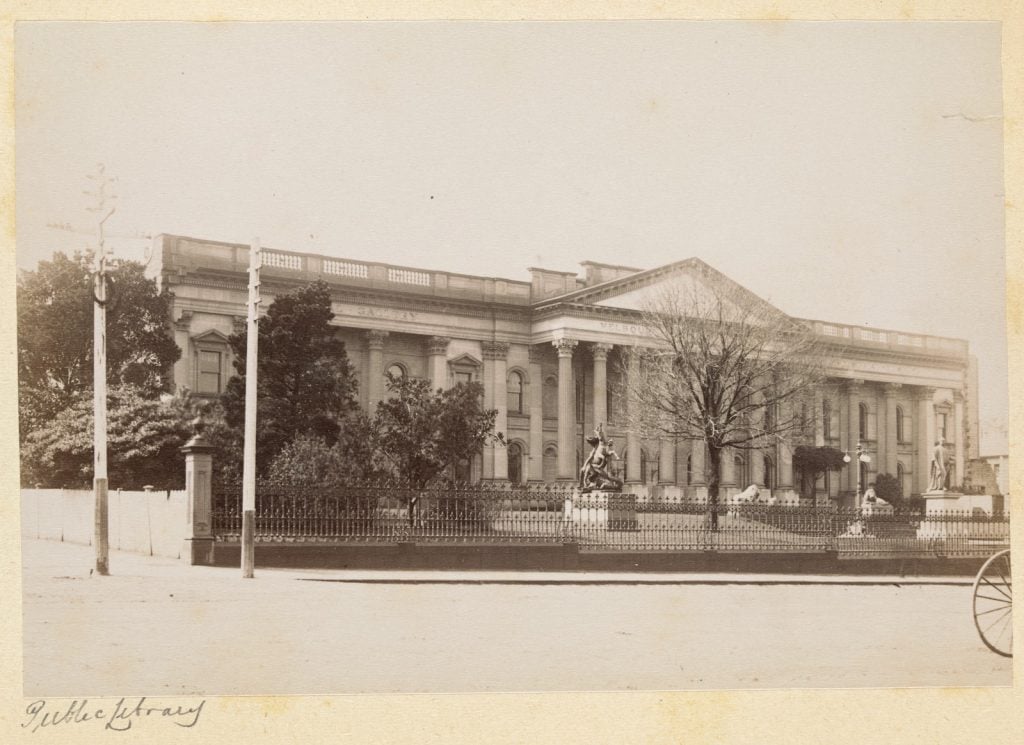
Significant tree plantings grew to screen portions of the Library façade, and cast shade over the terraced lawns. It wasn’t until 1939 that the space was opened up with the removal of the fence and the creation of diagonal paths, in a £3500 plan for beautification works designed to ‘dispel the atmosphere of gloom around the building’ (The Argus, 8 Sep 1938, p 8) and ‘permit a better view of the building from Swanston Street’. (The Herald, 23 Sep 1938, p 8)
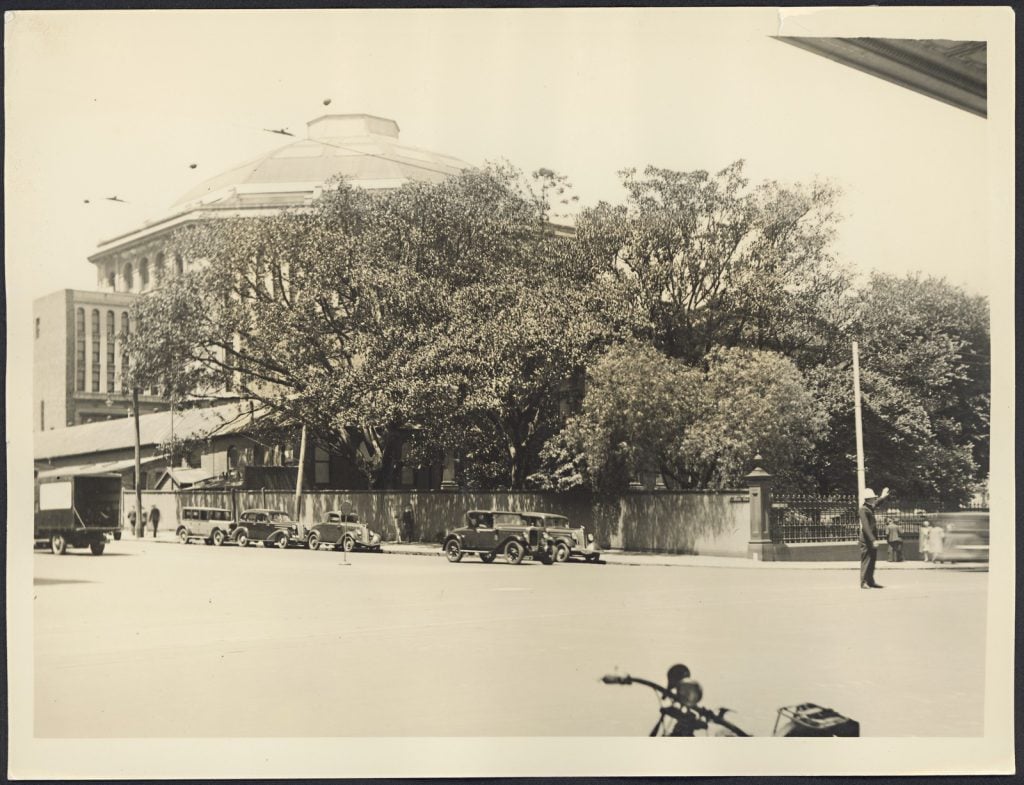

There was significant public outcry about the removal of the large Moreton Bay Fig trees, which were old, well-established and provided welcome shade and a ‘happy luncheon place’.
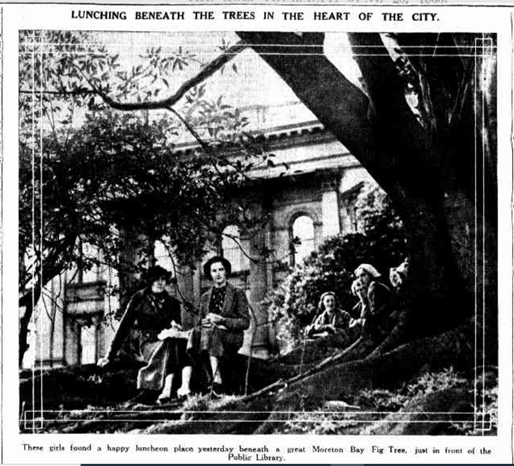
Though the trees were sadly not saved, the main Library steps (which had been slated for removal) were preserved (The Argus, 23 Sep 1938, p 2) – steps which now serve as such an iconic platform for events, performance and public demonstration.

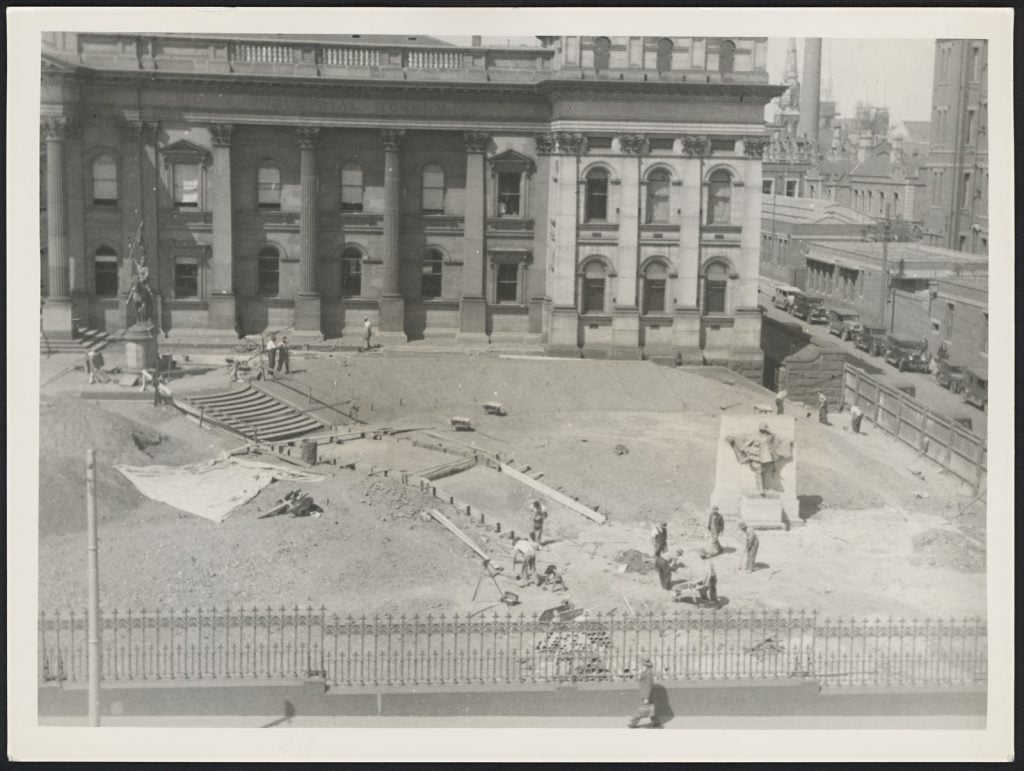
Large trees planted as part of the 1939 works covered much of the forecourt, and by the early 1990s almost completely obscured the Library from the street – until a 1998 forecourt redevelopment saw 28 trees again removed, creating the sweeping lawns the site is so well known for today.
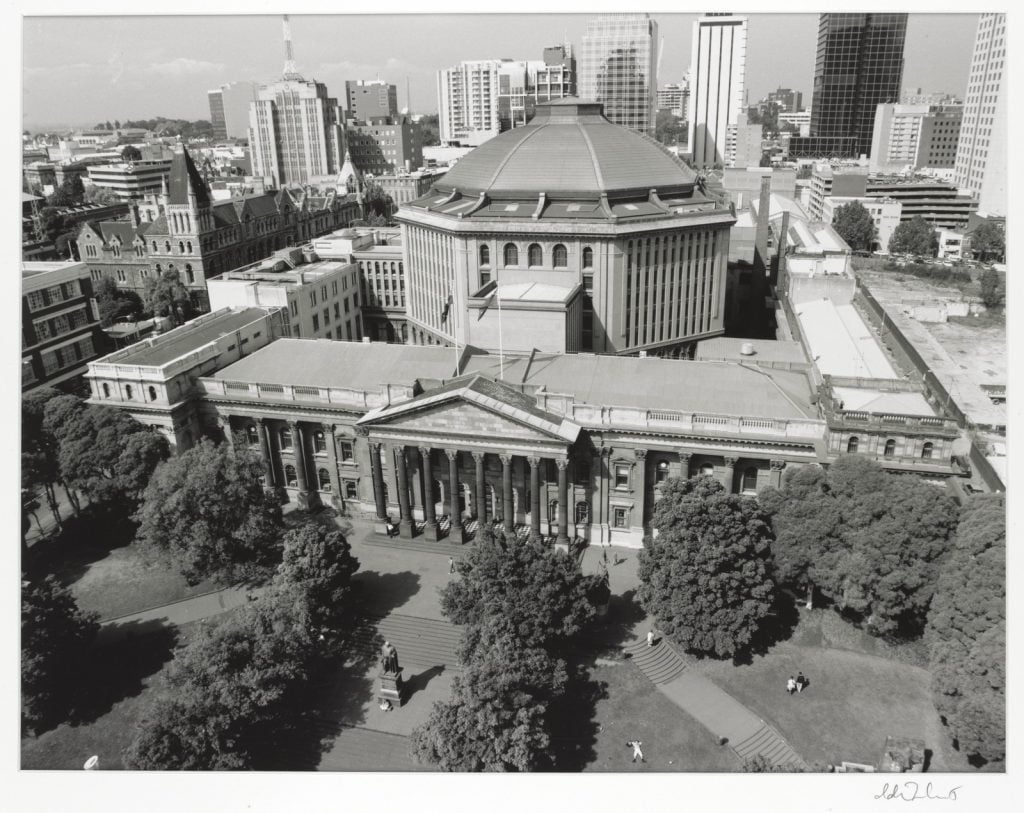
Protests and public meetings in Melbourne
Speakers’ Corner
In the late 1880s, an area on the edge of the CBD was earmarked as a location for people to gather on Sunday afternoons, have their say and discuss issues. This was called Yarra Bend, and became known as the Speakers’ Corner. Topics discussed were usually radical and often advocated social change – such as worker’s rights, women’s suffrage, religion and anti-conscription.
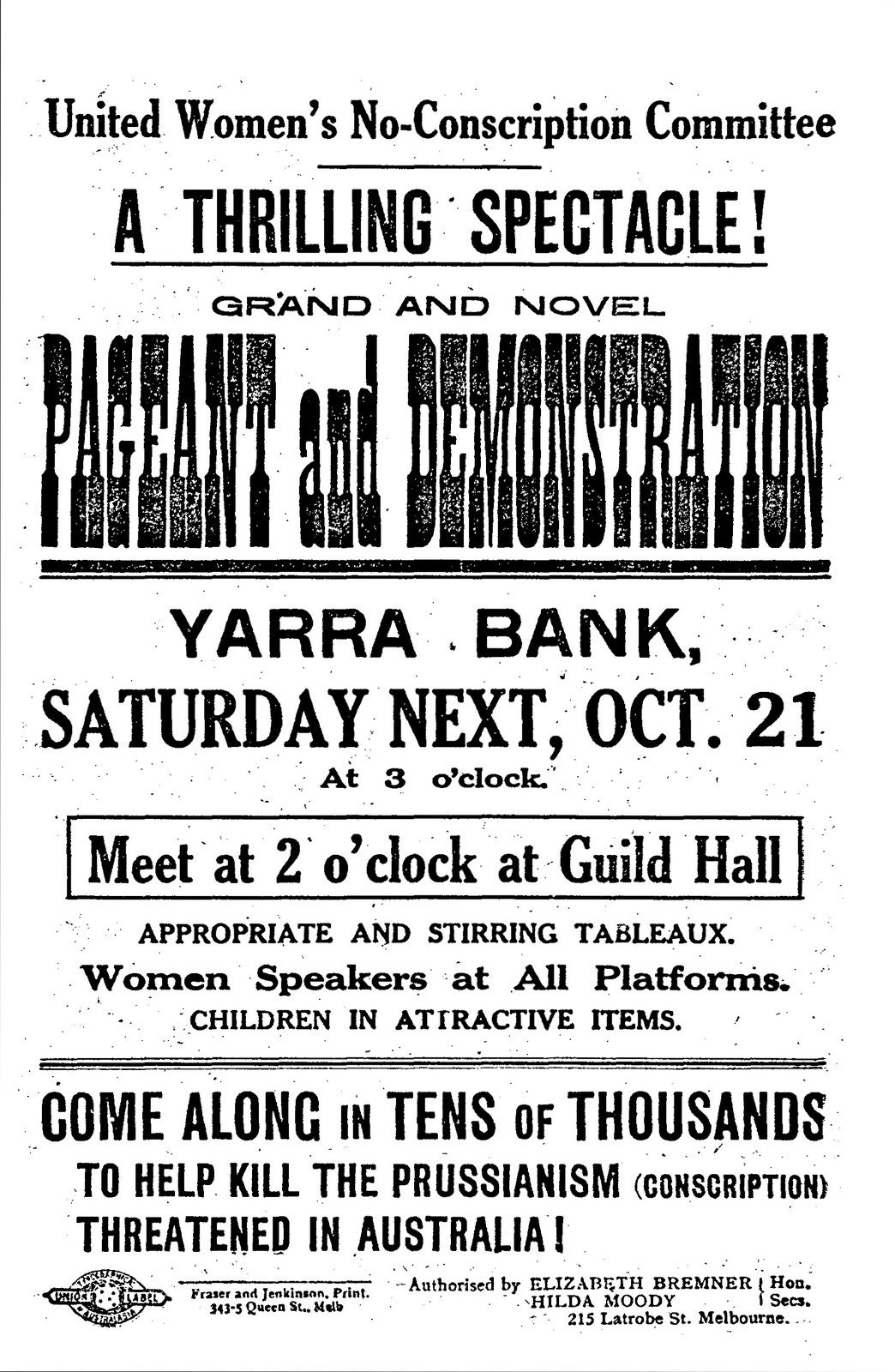
Over time public meetings of this type became less common, thought to be largely due to the advent of television and more varied media. The Speaker’s Forum (as it is now known) moved from Yarra Bank to City Square in 1986 and then, at the request of the Melbourne City Council, to the State Library Lawns in 19951. The Library maintained a friendly relationship with the group, storing their signs, megaphone and ‘soapbox’ for them to access every Sunday, but the Forum has been quiet for a number of years. Public expression became more common in the form of rallies and demonstrations – at City Square, Parliament, Treasury or on the streets.

Protest
Protests and demonstrations have been happening in Melbourne since the 1840s 2. From labour conditions to marriage equality, environmental issues to anti-war demonstrations, countless issues have brought Victorians out onto the streets to share their views.
There are a number of venues throughout the city where people gather – the State Library is but one. The slope of the Library forecourt creates a natural platform for speakers and leaders in front of the Library portico, and the crowd can spill down over the steps and lawns onto the streets around. Sometimes the crowd is protesting, sometimes it is celebrating – either way the forecourt serves as a stage for people sharing what they feel is important.
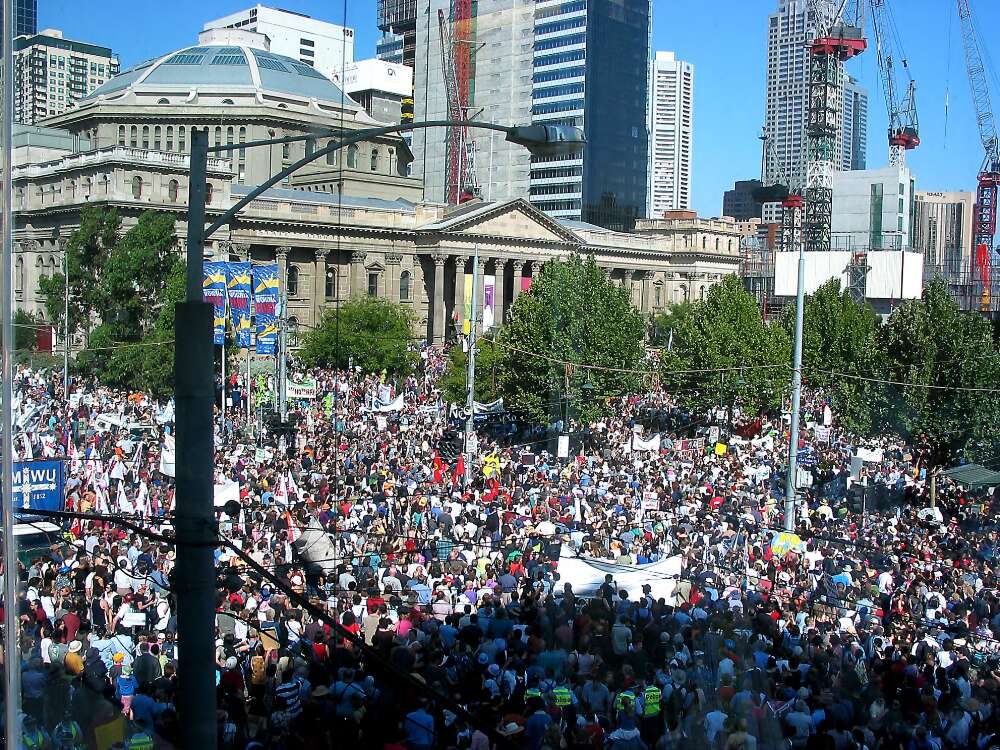
Planning a protest?
The forecourt is what’s known as a ‘privately managed public space’, which means that though it is a public space, it is governed by the Library by-laws which are overseen by the Library Board of Victoria. Anyone wishing to hold a public event, demonstration, protest or rally on the forecourt should get in touch with the Library’s Security Operations team.
Further resources
Yarra Bend – Digital Heritage Australia
Protest Melbourne – an online exhibition from the Old Treasury Building
More to explore
References
- OnlyMelbourne, 2022, Speakers Forum | Soapbox Oratory, viewed 10 April 2022, <https://www.onlymelbourne.com.au/speakers-forum-soapbox-oratory>
- Old Treasury Building, 2022, Protest Melbourne: Introduction – Old Treasury Building, viewed 10 April 2022, <https://www.oldtreasurybuilding.org.au/protest/protest-introduction/>

